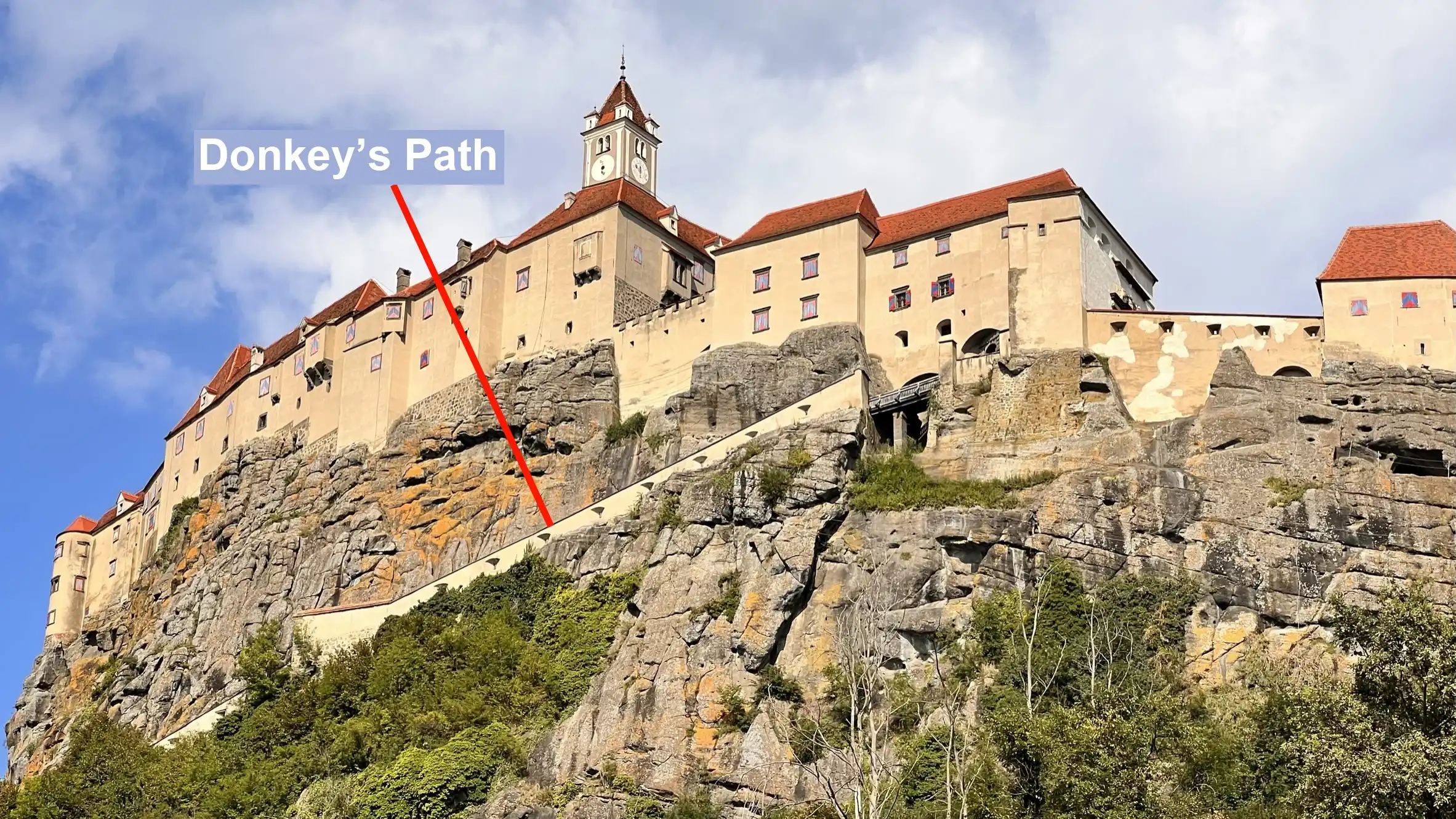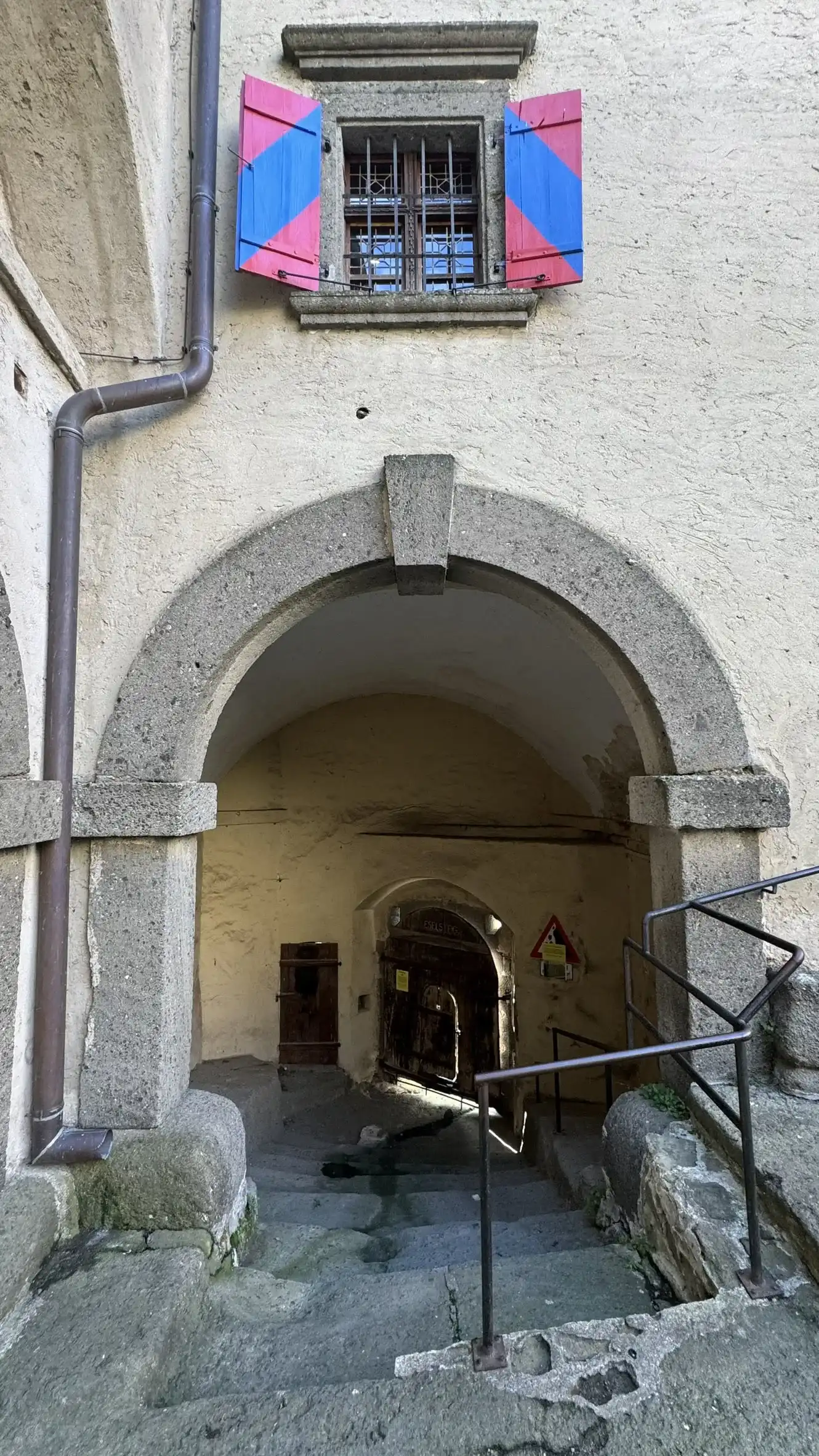Donkey’s Path
A legendary and steep side-path.
The Donkey’s Path (Eselsteig) is about 120 metres long and consists of 110 steps carved out of the basalt rock. At its lower end, once stood a farmyard consisting of five buildings.
On the outer side, the path has a protective wall with embrasures. There were gatehouses along the path, of which only the gate arches remain. There was a small drawbridge at the upper end of the path.
According to a legend, the Donkey’s Path was constructed because the two castles (Kronegg and Lichtenegg) belonged to two feuding brothers. The Kronegg lord was often denied access via the main castle route, so he had the Donkey’s Path built as an alternative route to remain independent.
It is fairly certain that the path was constructed in the early 15th century by the Walseers, as indicated by a stone Gothic archway in the middle gate of the Donkey’s Path. The construction of the path could have been triggered by the Walseer feud, during which the lower castle Lichtenegg was seized by Duke Ernst the Iron.
As the Niedere Veste (lower castle) could control access to the upper castle, the capitulation of Kronegg (upper castle) became more and more likely. With the Donkey’s Path serving as an independent supply route, such an event could no longer occur easily.
Labelled Image




